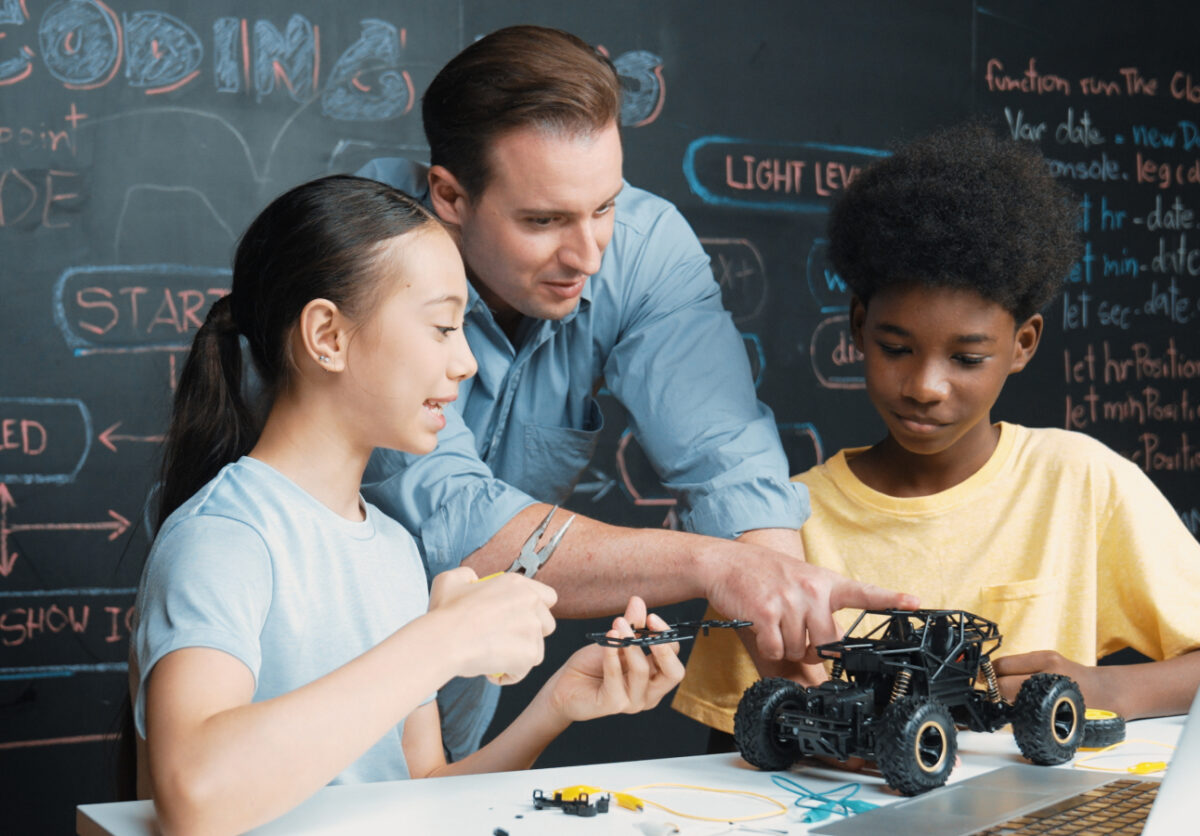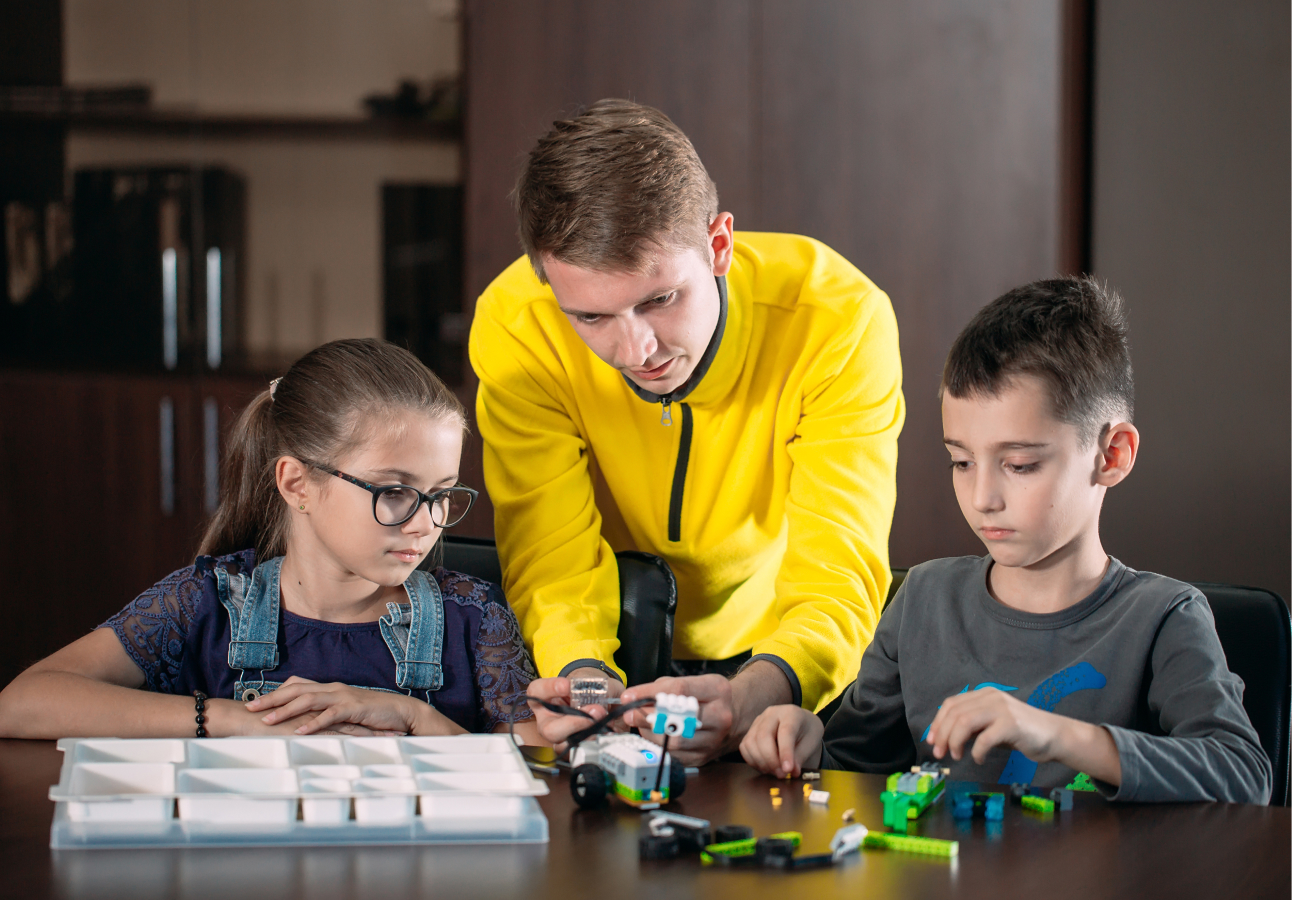Why Learning Engineering Concepts is Essential in Primary and High School?

In today’s rapidly evolving technological landscape, introducing engineering concepts in primary and high school is more than just an academic exercise—it’s a vital foundation for nurturing the innovators and problem-solvers of tomorrow. By integrating engineering principles early, students develop critical thinking, problem-solving, and creativity, preparing them for real-world challenges and future careers.
At Stementis, we are committed to making engineering accessible, engaging, and hands-on. Our STEM Simulator, Engineering and Robotics Kit, Electronics Kit, and structured STEM Courses provide students with interactive learning experiences that bridge the gap between theory and real-world applications.
1. Fostering Problem-Solving and Critical Thinking
Engineering naturally develops problem-solving skills. Students learn to approach challenges methodically—identifying problems, brainstorming solutions, testing prototypes, and refining outcomes. This iterative process cultivates critical thinking and resilience, essential skills in STEM fields, business, and daily life.
With Stementis’ Engineering and Robotics Kit, students gain hands-on experience in building and troubleshooting real-world projects, reinforcing logical reasoning and adaptability.
2. Enhancing Engagement Through Hands-On Learning
Traditional classroom learning often relies on theory, which can lead to disengagement. However, engineering makes abstract ideas tangible through hands-on experiences.
- The Stementis STEM Simulator allows students to experiment with mechanical, electrical, and coding concepts in a safe, interactive virtual environment.
- Our Electronics Kit lets students physically build and test circuits, making electrical engineering engaging and practical.
- Stementis’ courses in Mechanical and Mechatronics Engineering encourage real-world applications of physics and technology, fostering deep understanding.
By providing engaging and interactive learning, students develop a passion for engineering and innovation.
3. Integrating Interdisciplinary Knowledge
Engineering is an interdisciplinary field, blending math, science, technology, and even creativity. When students work on engineering projects, they apply concepts from multiple subjects, leading to a holistic educational experience.
For example, Stementis’ Robotics and Automation courses combine mechanics, electronics, and coding, preparing students for emerging industries like AI, robotics, and automation. This interdisciplinary learning approach mirrors real-world problem-solving, helping students connect knowledge across domains.
4. Preparing for Future Workforce Demands
As the world becomes increasingly technology-driven, students must be prepared with practical, future-ready skills. Engineering education aligns with workforce demands, ensuring students develop critical competencies in robotics, automation, and digital fabrication.
At Stementis, we partner with industries and run Corporate Social Responsibility (CSR) programs to ensure that our STEM learning solutions align with industry needs. By working on real-world projects with our Kits and STEM Simulator, students gain skills applicable in emerging tech careers.
5. Encouraging Creativity and Innovation
Engineering is all about creating solutions. When students work on engineering projects, they design, innovate, and build, fostering a mindset of experimentation and discovery.
With Stementis’ Engineering and Robotics Kit, students can prototype ideas, build functional models, and test creative solutions. This hands-on approach encourages out-of-the-box thinking, a vital skill for entrepreneurs and future industry leaders.
6. Building Resilience and Adaptability
In engineering, failure is part of the learning process. Students test, refine, and improve their designs, building resilience and adaptability—two crucial skills in today’s fast-changing world.
Stementis’ interactive learning tools (Simulator, Kits, and Courses) allow students to experiment without fear of failure, reinforcing the idea that mistakes lead to better solutions. This growth mindset helps students persist in problem-solving and innovation.
7. Promoting Collaboration and Communication
Engineering is rarely a solo endeavor. Real-world projects require teamwork, idea-sharing, and effective communication.
Stementis’ STEM Courses and Group Learning Modules encourage collaborative problem-solving, mirroring professional environments where engineers, designers, and programmers work together. By learning how to articulate ideas and work in teams, students develop essential soft skills for their future careers.
Conclusion
Integrating engineering concepts into primary and high school education isn’t just about preparing students for STEM careers—it’s about equipping them with life skills. Through problem-solving, hands-on learning, interdisciplinary integration, and fostering creativity, engineering education lays the foundation for a generation that is innovative, resilient, and future-ready.
With Stementis’ STEM Simulator, Engineering and Robotics Kit, Electronics Kit, and Courses, students don’t just learn engineering—they experience it firsthand, preparing them to shape the future of technology.


